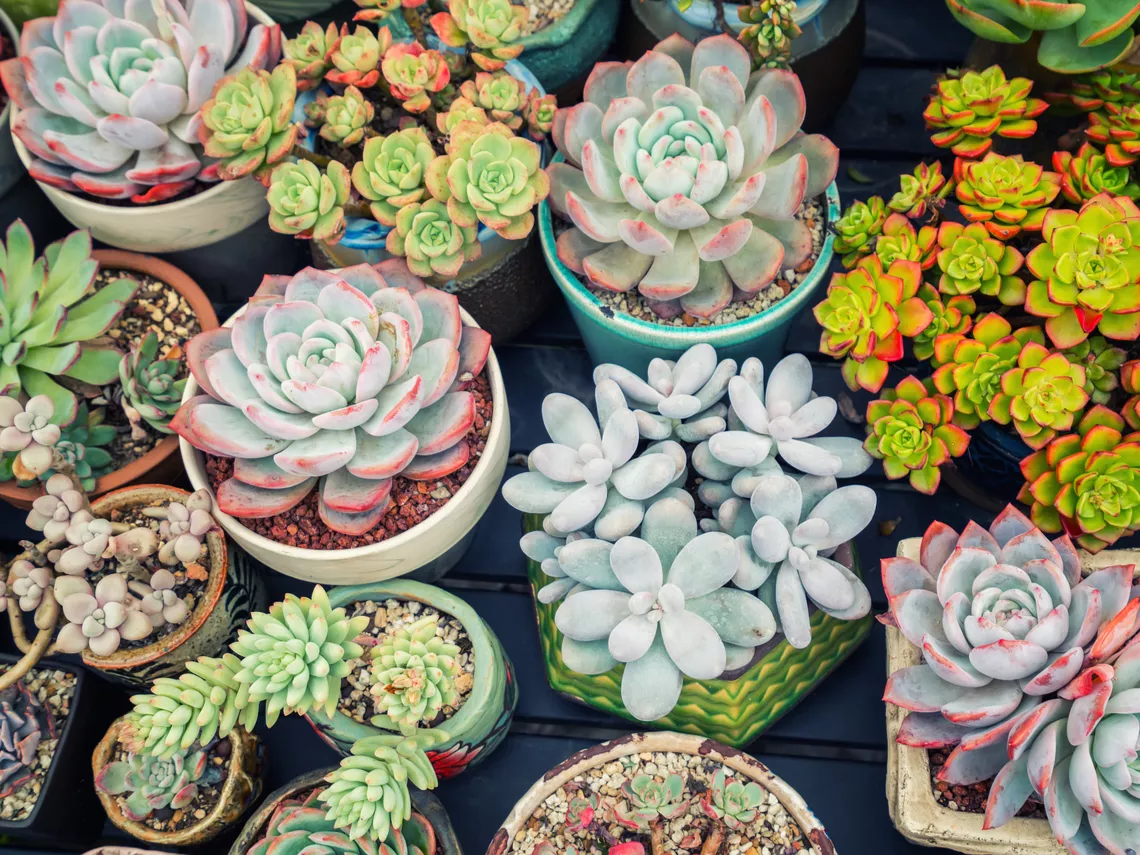Mini succulents indoors have become a popular choice for plant enthusiasts due to their charming appearance and low-maintenance nature. These tiny treasures can thrive in a variety of indoor settings, making them an excellent addition to any home or office.
Choosing the Right Mini Succulents
The first step in caring for mini succulents indoors is selecting the right species. Popular choices include Echeveria, Haworthia, Crassula, and Sedum. These varieties are well-suited for indoor environments, as they are typically more adaptable to lower light conditions and confined spaces.
Selecting the Proper Containers
Mini succulents indoors require containers that provide proper drainage. Choose pots or containers with drainage holes to prevent water from pooling at the bottom, which can lead to root rot. Additionally, opt for shallow containers to mimic their natural habitat and promote healthier growth.
Well-Draining Soil Mix
Mini succulents thrive in well-draining soil that mimics the arid conditions of their native habitats. A suitable soil mix typically consists of a combination of potting soil and perlite or coarse sand. This blend ensures that excess water quickly drains away from the roots, preventing overwatering.
Watering Mini Succulents Indoors
Proper watering is crucial for the health of mini succulents indoors. Contrary to popular belief, these plants do require water, but they are sensitive to overwatering. Watering frequency depends on various factors, including the succulent species, container size, and environmental conditions.
The “soak and dry” method is a widely recommended approach. Water the plant thoroughly, allowing excess water to drain from the pot’s bottom. Wait until the soil has dried out completely before watering again. This typically means watering every 2-4 weeks, depending on your indoor climate.
Light Requirements
Mini succulents indoors thrive in bright, indirect sunlight. Place them near a window with filtered sunlight or use grow lights if natural light is limited. Rotate your succulents periodically to ensure even growth, as they tend to lean towards the light source.
Temperature and Humidity
Mini succulents indoors prefer a temperature range of 60-80°F (15-27°C). They are adaptable to fluctuations, but extreme temperature variations should be avoided. These plants also appreciate lower humidity levels, making them well-suited for indoor environments.
Fertilizing Mini Succulents
Fertilizing mini succulents indoors should be done sparingly. During the growing season (typically spring and summer), use a balanced, diluted liquid fertilizer once every 4-6 weeks. Avoid over-fertilizing, as it can lead to excessive growth and weakened succulents.
Pruning and Maintenance
Regular maintenance is essential for keeping mini succulents indoors looking their best. Prune any dead or yellowing leaves with clean, sharp scissors or pruning shears. This not only improves the plant’s appearance but also helps prevent the spread of diseases.
Pest Control
Mini succulents indoors are generally hardy, but they can still fall victim to common indoor pests like mealybugs, aphids, and spider mites. Regularly inspect your plants for signs of infestation, such as webbing or sticky residue. If pests are present, treat the affected plants with insecticidal soap or neem oil.
Repotting
As mini succulents grow, they may outgrow their containers. When you notice that the plant has become root-bound or the soil has become depleted of nutrients, it’s time to repot. Choose a slightly larger container with proper drainage and fresh well-draining soil. Repotting is typically done every 2-3 years.
Dealing with Common Issues
Despite your best efforts, you may encounter issues while caring for mini succulents indoors. Here are some common problems and their solutions:
Overwatering: If you notice signs of overwatering such as yellowing leaves or rotting stems, reduce watering frequency and allow the soil to dry out completely before watering again.
Underwatering: Mini succulents can also suffer from underwatering, leading to shriveled or wrinkled leaves. Increase your watering schedule, but be sure to maintain proper drainage.
Leggy Growth: Insufficient light can cause succulents to grow tall and leggy. Provide more light or consider using a grow light to encourage compact growth.
Conclusion
Caring for mini succulents indoors can be a rewarding and enjoyable experience. By selecting the right species, providing proper containers, well-draining soil, and paying attention to their unique needs for water, light, and temperature, you can ensure the health and vitality of these charming plants in your indoor space. With regular maintenance and a little TLC, your mini succulents will thrive and bring a touch of natural beauty to your home or office.


